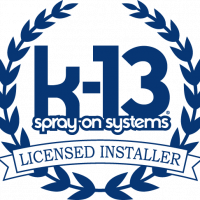One of the biggest DIY projects homeowners decide to undertake is finishing their basement. Not only does it give them a wealth of DIY experience, it’s also not part of the living space—which means they can take as long as they want or make as many mistakes as they need to before getting things right.
Just because basement finishing is a good DIY project doesn’t mean it’s without its pitfalls, though. One of the biggest mistakes homeowners tend to make when refinishing their basement has to do with insulation. Often, they don’t have all of the essential information or foresight that a professional contractor does, leading to some costly and invasive headaches if the project is done wrong.
We’re here to provide some tips on what to do and what not to do when you install insulation in Petaluma, CA for your basement.
The Proper Process
Before we break down tips for basement insulation, it’s important to get a grip on the overall process. Here’s what it looks like in most cases:
- The base concrete or cinderblock basement walls are cleaned and treated for water
- Foam board insulation is glued to the base and exposed walls and left to properly dry
- The walls of the basement are framed directly against the foam board insulation
- Plumbing and electrical are run through the newly framed walls
- The walls are insulated with batting
- Sheet rock or water-resistant drywall is used to finish the walls
As you can see, there are actually two types of insulation commonly used. Moreover, they’re used in a specific order. Here’s why:
- Foam board insulation is placed directly against the bare walls because it’s inert—meaning it won’t mold or become soggy if there is water leakage in the basement. This is important for avoiding rot.
- Batt insulation is used after the walls are framed to provide true insulation properties to the basement, while also preserving an air barrier. It’s also the most affordable option.
Again, this is most cases. In many newer homes or in homes with larger budgets, spray foam insulation is absolutely an option and provides the same, if not better, benefits with even better longevity.
Tips to Keep in Mind
For DIY homeowners about to install insulation in Petaluma, CA, there’s more to the process than just following the steps. Here are a few unspoken tips to keep in mind:
- When gluing foam board insulation, make sure to use glue specially made for foam applications. Regular commercial glue will degenerate the foam over time.
- Have a building inspector or code compliance inspector observe your foam board and framing before proceeding. Then, have them inspect again after the batting is installed, to make sure everything is up to code.
- Don’t even think about insulating your basement until you’re certain there are absolutely no leaks present!
Finishing a basement is a great confidence booster for the aspiring DIY enthusiast. Even though there is room for mistakes, however, it’s best to avoid them by doing this right the first time. Consider the above tips when it comes to framing and insulation.


